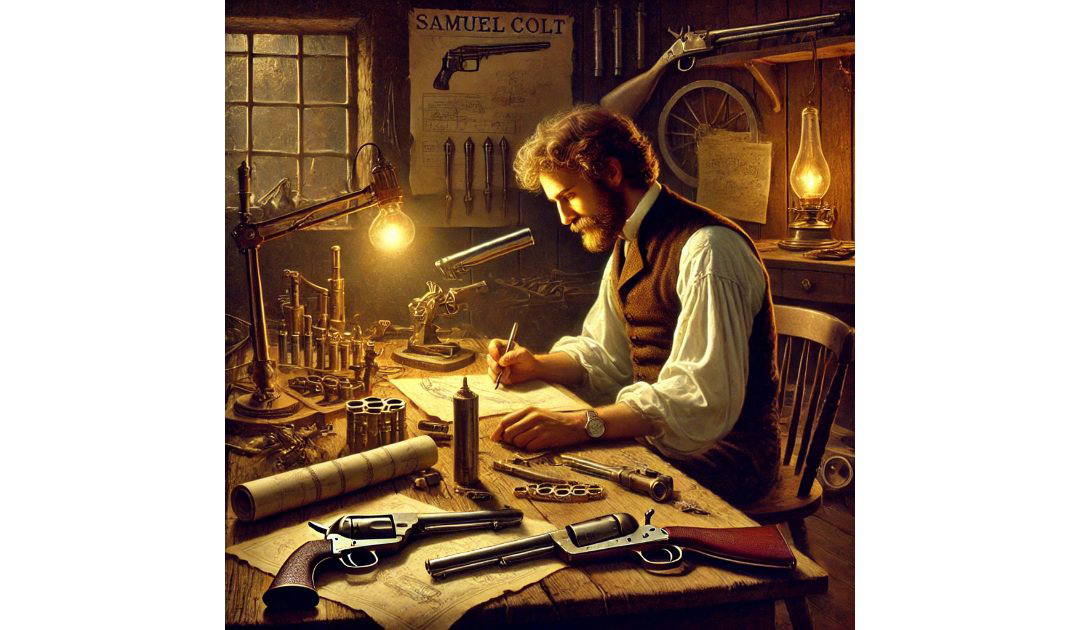On the 25th of February, 1836 Samuel Colt patented his first revolver. Colt was born on the 19th of July, 1814, in Hartford, Connecticut. From a young age, he showed an interest in mechanics and chemistry. At 16, while working on a farm, he became fascinated by the mechanics of firearms. Inspired by the idea of a rotating cylinder that could fire multiple rounds without reloading, he began developing the concept for a revolver. The same year Colt went to sea as a sailor. During his voyage, he carved a wooden model of a revolving pistol, which became the basis for his future firearms. Upon returning, he sought to turn his idea into a working prototype.
By 1836, Colt had secured a patent for his revolver design, which featured a rotating cylinder capable of holding five or six bullets. This innovation allowed users to fire multiple shots before needing to reload, a major advancement over single-shot pistols.
Despite its innovative design, early sales were slow. However, demand increased during the Texas Revolution and the Seminole Wars, where the revolver proved effective in combat.
Colt’s fortunes changed during the Mexican-American War (1846 – 1848). U.S. Army Captain Samuel Walker collaborated with Colt to design a more powerful six-shot revolver, the Colt Walker. This partnership led to a large military contract, allowing Colt to expand production.
In 1855, Colt established the Colt’s Patent Fire-Arms Manufacturing Company in Hartford, Connecticut. His factory was one of the first to use assembly line techniques, significantly improving efficiency and reducing costs. Colt’s methods influenced modern mass production, making firearms more widely available.
By the late 1850s, Colt’s revolvers were in high demand worldwide. His weapons were used in the Crimean War, the Indian Rebellion of 1857, and by both sides during the American Civil War. His aggressive marketing strategies and innovations made Colt a wealthy and influential businessman.
Samuel Colt died on the 10th of January, 1862, at the age of 47. Despite his early death, his company continued to grow, producing firearms that became icons of the American West and military history. Colt’s contributions to firearms design and manufacturing revolutionised the industry, making him one of the most influential inventors of the 19th century.
As the James Bond of his age, my Elizabethan spy ancestor, Sir Anthony Standen, would I imagine have had an interest in the latest weaponry. Unfortunately some readers aren’t convinced. I get the occasional review on Amazon stating that I have made errors. A review on Called to Account, the fourth book in the Sir Anthony Standen Adventures, claimed that I had made some shocking gaffs with weapons. I’m sure he (I’m making an assumption there) was referring to my use of rifles in 1612. Certainly rifles only became commonplace in the 1850’s but they had been around since the late 15th century, albeit very expensive. Samuel Colt’s mass production techniques brought the price down. But the James Bond of his day would have wanted rifles.

